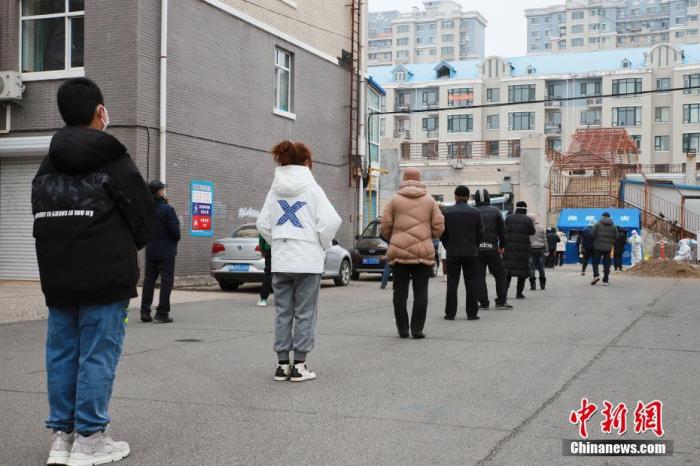Chinanews.com, November 13th. Wu Liangyou, deputy director of the National Health Commission’s Disease Control Bureau, introduced on November 13 that at present, the overall epidemic situation in the country has stabilized. The epidemic situation in many provinces affected by the epidemic in the early stage has been effectively controlled. Successfully blocked the spread of the virus.
Data map: On November 5, in Aihui District, Heihe City, Heilongjiang Province, residents lined up in an orderly manner at an interval of 1 meter for nucleic acid testing.
Photo by China News Agency reporter Li Jiangming
The State Council's Joint Prevention and Control Mechanism held a press conference on November 13.
A reporter asked at the meeting: 21 provinces have been involved in this round of the epidemic. What is the current situation?
What is the expected future development trend?
Wu Liangyou mentioned that at present, the overall epidemic situation across the country has stabilized. The epidemics in many provinces affected by the epidemic in the early stage have been effectively controlled, and the spread of the virus has been successfully blocked.
The epidemics in Heihe in Heilongjiang, Shijiazhuang in Hebei, Zhengzhou in Henan, and Chengdu in Sichuan are gradually being brought under control.
The epidemic situation in some areas such as Dalian in Liaoning, Beijing, Shangrao in Jiangxi, and Dehong in Yunnan still needs attention.
Among them, the Dalian epidemic has developed rapidly in recent days and is currently in a stalemate. Community transmission has occurred in individual towns and streets in the city. The cases are mainly concentrated in Zhuanghe City and have not spread to areas outside Dalian.
The number of people infected with the Beijing-Jilin-related epidemic is limited, and investigations and control measures of risk sites and risk groups are proceeding in an orderly manner.
Wu Liangyou pointed out that since the outbreak of this round of the epidemic, the virus has been highly contagious and the epidemic has involved many provinces.
All localities and departments resolutely implement the decisions and deployments of the Party Central Committee and the State Council, act quickly, and assume their responsibilities.
The Comprehensive Team of the Joint Prevention and Control Mechanism of the State Council promptly dispatched a front work group to guide the orderly implementation of nucleic acid testing in areas where the epidemic occurred, quickly investigate populations at risk locations, strengthen the isolation and control of key personnel, and pay close attention to medical treatment and infection prevention and control.
The epidemics in Shaanxi, Inner Mongolia, Gansu, Qinghai, Ningxia, Hubei, Hunan, Shandong, Jiangsu, Zhejiang, Guizhou, Chongqing and other provinces (autonomous regions and municipalities) have basically been controlled around an incubation period.
At present, in key areas such as Dalian, Heihe, Chengdu, Shijiazhuang, Shangrao, Ruili, and other key areas, there are still working groups sent by the State Council's Joint Prevention and Control Mechanism Comprehensive Team to guide the local epidemic handling.
Wu Liangyou said that the National Health Commission will pay close attention to the situation of the epidemic situation in various places, continue to guide local areas to implement prevention and control measures, go all out to control the spread of the epidemic, and resolutely consolidate the hard-won prevention and control results.

